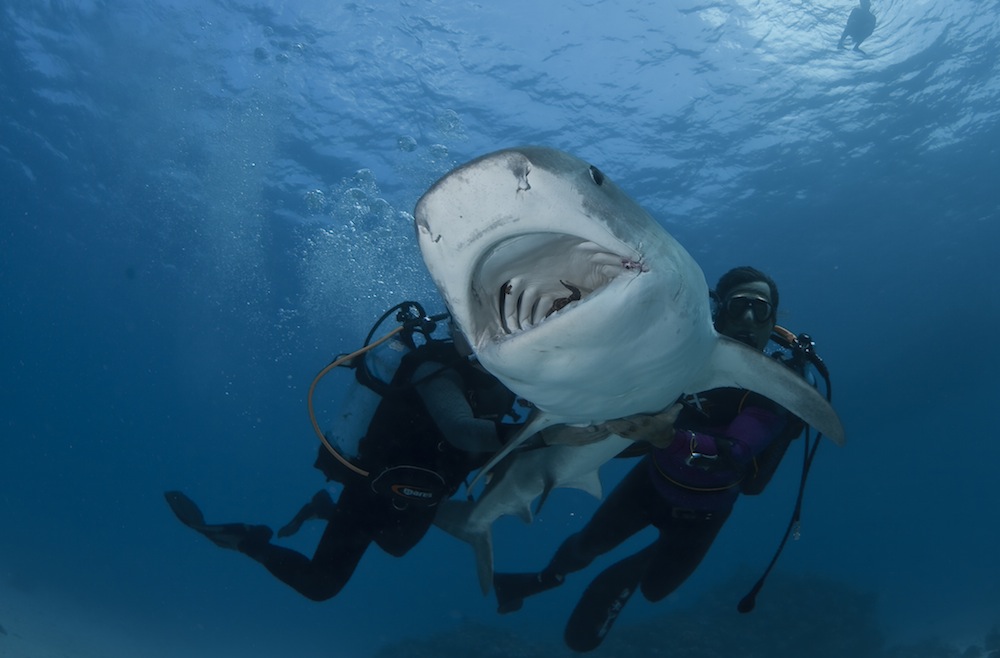This Tactic Could Wipe Out Shark Attacks

A program that catches and releases potentially aggressive sharks off the coast of Recife, Brazil, has reduced shark attacks on humans by 97 percent, new research finds.
Deploying similar tactics in other areas where sharks and swimmers mingle might also reduce shark attacks while protecting the graceful beasts, scientists say. In the past months, there have been large protests against programs that cull sharks, particularly in Australia.
"With a 50,000-person protest in Western Australia against lethal methods [of shark control], this is exciting news," said David Shiffman, a doctoral student at the University of Miami who studies shark ecology but was not involved in the Recife project.
Shark attack scares
Shark attacks are exceedingly rare, with only about 50 to 70 attacks on people per year worldwide, according to the Florida Museum of Natural History. Of those, only a few are fatal. Between 2006 and 2010, an average of 4.2 people per year died from shark attacks globally, according to the nonprofit conservation organization Oceana. [On the Brink: A Gallery of Wild Sharks]
Nevertheless, sharks engender fear, and a single attack can hurt tourism in beach areas. As a result, local officials often feel the need to do something about sharks, Humberto Hazin and Andre Afonso, researchers at the Universidade Federal Rural de Pernambuco, reported in the August issue of the journal Animal Conservation.
Recife, which is located in the northeastern Brazilian state of Pernambuco, saw a sudden uptick in shark attacks on humans beginning in 1992, after the construction of a port complex south of the coastal city. Researchers suspect the port disrupted shark habitat, pushing the animals into recreational waters north of the port. Whatever the reason, there were 55 shark attacks on humans between 1992 and 2011, 36 percent of which were fatal.
Get the world’s most fascinating discoveries delivered straight to your inbox.
Solution for sharks
In 2004, the Pernambuco state government instituted a program to mitigate the shark-attack problem. Many areas around the world use lethal means to control sharks, often by culling them. Another popular strategy involves deploying networks of gill nets, which entangle sharks, often killing them by suffocation. Gill nets are used in South Africa and Australia, but they also tend to catch other marine animals, such as dolphins, sea turtles and fish. Conservationists object to these lethal methods, given that one-third of shark and ray species are threatened with extinction.
Officials in Pernambuco chose another path: They deployed drum lines (fishing lines attached to a large floating drum) and long lines (fishing lines baited with multiple hooks) outside swimming areas off Recife. A boat crew checked the lines frequently to remove any hooked animals. Potentially dangerous shark species — including tiger sharks, blacktip sharks, bull sharks and hammerheads — were taken from these lines, loaded into saltwater tanks on the boat, motored into deeper waters away from the beaches, and released. [See Stunning Photos of Great White Sharks]
During the 73 months the program was active, 1,121 individual animals were caught. Fifty-nine percent of the catches were ray-finned fish, and 40 percent were sharks, rays and their relatives. A few marine turtles, representing about 0.8 percent of the catch, were also hooked.
Seven percent of the captured animals were potentially dangerous sharks, mostly tiger sharks and bull sharks. Overall, 60 percent of these potentially dangerous sharks survived their catch-and-release, and 78 percent of all animals hooked survived the experience. Most encouraging, however, was that there were no deaths of protected marine species.
Protecting swimmers
The program also seemed to work for swimmers. Between 1992 and the beginning of shark fishing in 2004, the Recife area averaged 0.289 shark attacks per month, or up to 10 each year. When catch-and-release shark fishing(with the long lines and drum lines) was active between 2004 and 2011, that number dropped to 0.014 attacks per month — in fact, there was only one attack during the months that fishing was active.
In that period, the program was interrupted several times due to a lack of funding, resulting in 23 months between 2004 and 2011 when there was no shark fishing off Recife. During these months, attacks went back up to an average of 0.435 per month. This rebound suggests that it was the catch-and-release that made the difference. There were 97 percent fewer shark attacks when fishing was active compared with when there were no attempts at shark control.
Recife's strategy is not likely to work everywhere, said Shiffman, who penned an editorial accompanying the paper. Different species and different ecosystems will respond differently to such programs, he told Live Science. Nevertheless, he found the results heartening.
"I think it's worth a try," he said. "I think it probably will be tried in other regions, and in some of them, it may work really well."
Follow Stephanie Pappas on Twitter and Google+. Follow us @livescience, Facebook & Google+. Original article on Live Science.

Stephanie Pappas is a contributing writer for Live Science, covering topics ranging from geoscience to archaeology to the human brain and behavior. She was previously a senior writer for Live Science but is now a freelancer based in Denver, Colorado, and regularly contributes to Scientific American and The Monitor, the monthly magazine of the American Psychological Association. Stephanie received a bachelor's degree in psychology from the University of South Carolina and a graduate certificate in science communication from the University of California, Santa Cruz.
